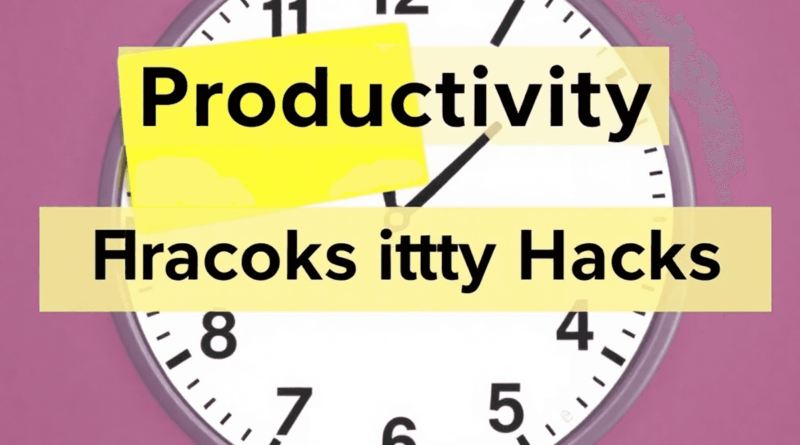Productivity Hacks
A famous teach once said, all distraction started as side attraction until you gave it your attention.
As we navigate through life, the quest for maximizing our efficiency in an ever-distracting world continues. Here’s a curated applicable steps of productivity hacks that blend the best of technology, psychology, and practical wisdom to help you achieve more with less stress.
Productivity isn’t just about doing more; it’s about doing what matters most, efficiently. With the integration of AI, the rise of remote work, and our ever-growing digital lives, here are some cutting-edge and timeless strategies to boost your productivity:
AI Task Managers: Utilize AI-driven task managers like Todoist or Microsoft To Do, which not only organize your tasks but predict your workflow, suggesting optimal times for different activities based on your habits.
AI for Email Management: Tools like SaneBox or Google’s Smart Reply feature can manage your inbox by sorting emails and drafting quick responses, freeing up hours each week.
Dedicated Time Slots: Schedule your day into blocks dedicated to specific tasks or types of work. Tools like Google Calendar or Calendly can help automate and visualize this process.
Thematic Days: Assign themes to each day of the week (e.g., “Marketing Monday” or “Writing Wednesday”) to focus your energy on one area at a time.
Focus Intervals: Work in 25-minute blocks with 5-minute breaks, but in 2025, we’re enhancing this with AI apps like Focus which curates music to maximize concentration based on your brain’s response.
Custom Intervals: Adjust the standard Pomodoro to fit your personal rhythm, perhaps working in 50-minute blocks with 10-minute breaks if that’s more effective for you.

App Detox: Use apps like Freedom or Cold Turkey Blocker to limit social media or unproductive browsing during work hours.
Notification Management: Turn off non-essential notifications. Customize when and how you receive alerts to ensure they don’t disrupt your flow.
Async Communication: With remote work here to stay, master asynchronous communication. Tools like Slack with its async-friendly features or Loom for video messages help maintain productivity without the need for immediate responses.
Project Management Tools: Platforms like Asana or Trello allow teams to track progress without real-time meetings, saving time for deep work.
Task Batching: Group similar tasks together (like responding to emails or making calls) to reduce the cognitive load of switching between different types of work.
Routine Automation: Use automation tools like Zapier or IFTTT to handle repetitive tasks, allowing you to focus on work that requires human insight.
Sleep Optimization: Use wearables like the Oura Ring or Fitbit to track and improve your sleep, understanding that well-rested individuals are more productive.
Micro-Movements: Incorporate small, frequent movements or standing desks to combat the health and productivity dip from prolonged sitting.
Time Tracking: Apps like RescueTime give you a breakdown of where your time goes, helping you to eliminate unproductive habits.
Productivity Analytics: Reflect on your productivity data to tweak your methods. What time do you work best? Which tasks take longer than expected?
Continuous Learning: Dedicate time each week to learn something new, using platforms like Coursera or Skillshare to keep your skills sharp and relevant.
Fail Forward: View setbacks as learning opportunities. Use project management tools to document lessons learned for future projects.
Prioritization: Understand that not every task or opportunity is worth your time. Use frameworks like the Eisenhower Box to decide what truly matters.
Boundary Setting: Communicate your availability and focus times clearly to colleagues and clients to protect your work blocks.

